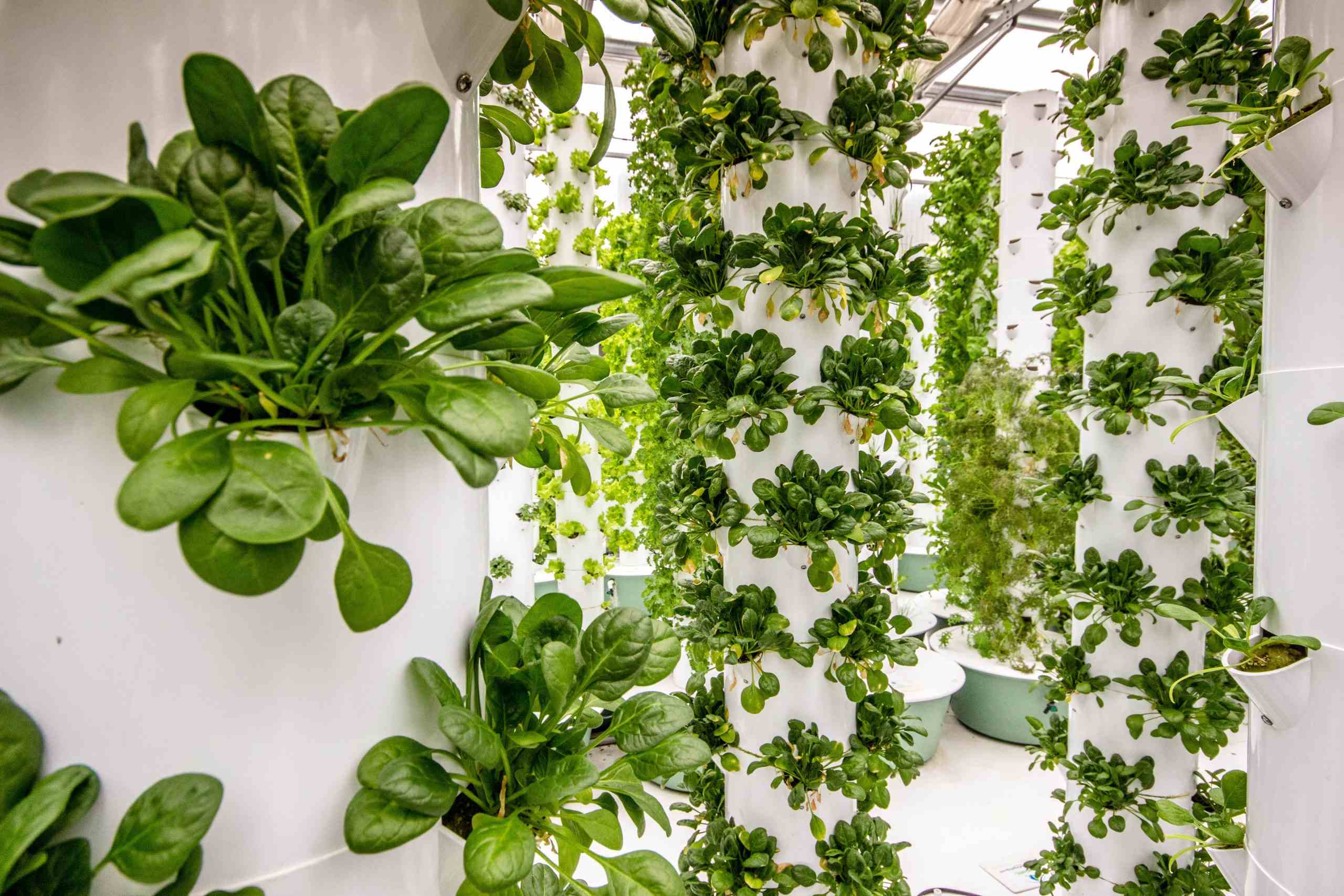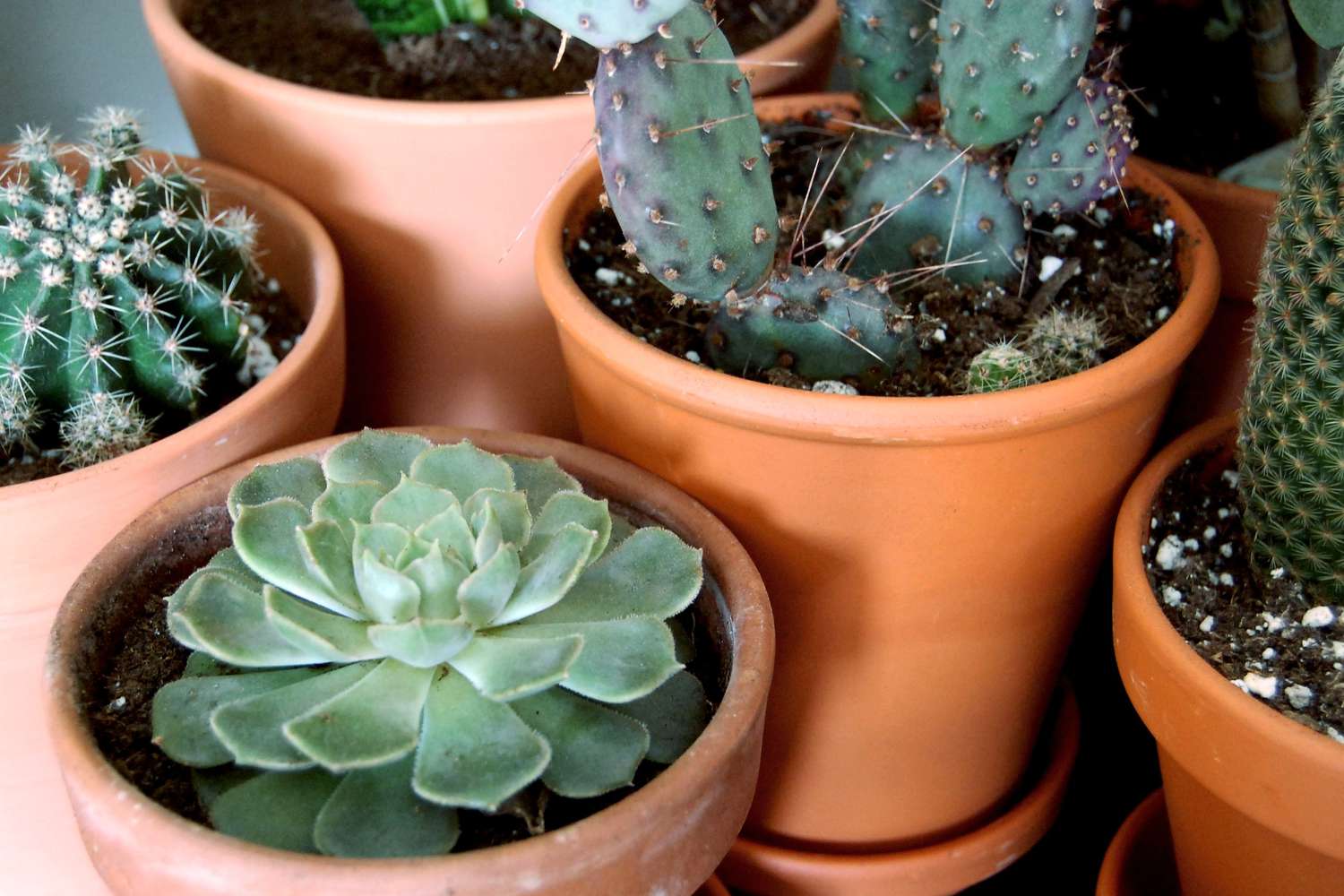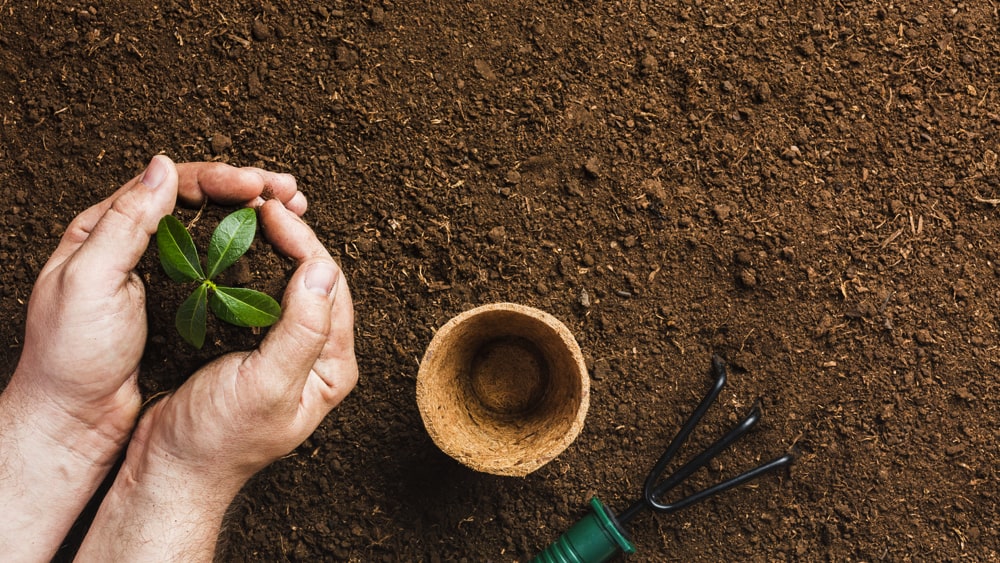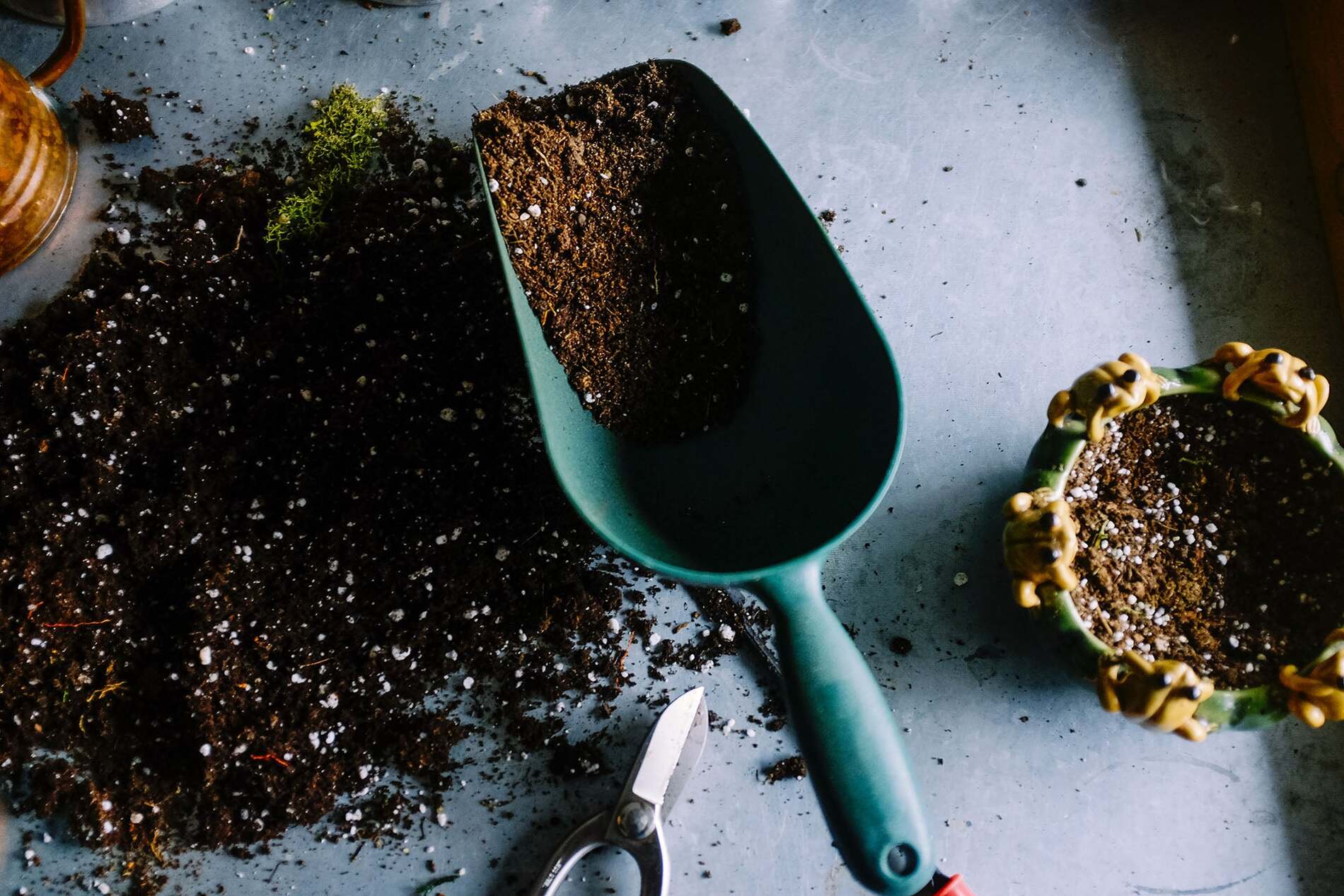Home>Gardening News and Trends>Gardening Trends>What Is The Difference Between Vegetative Planting And Seed Agriculture
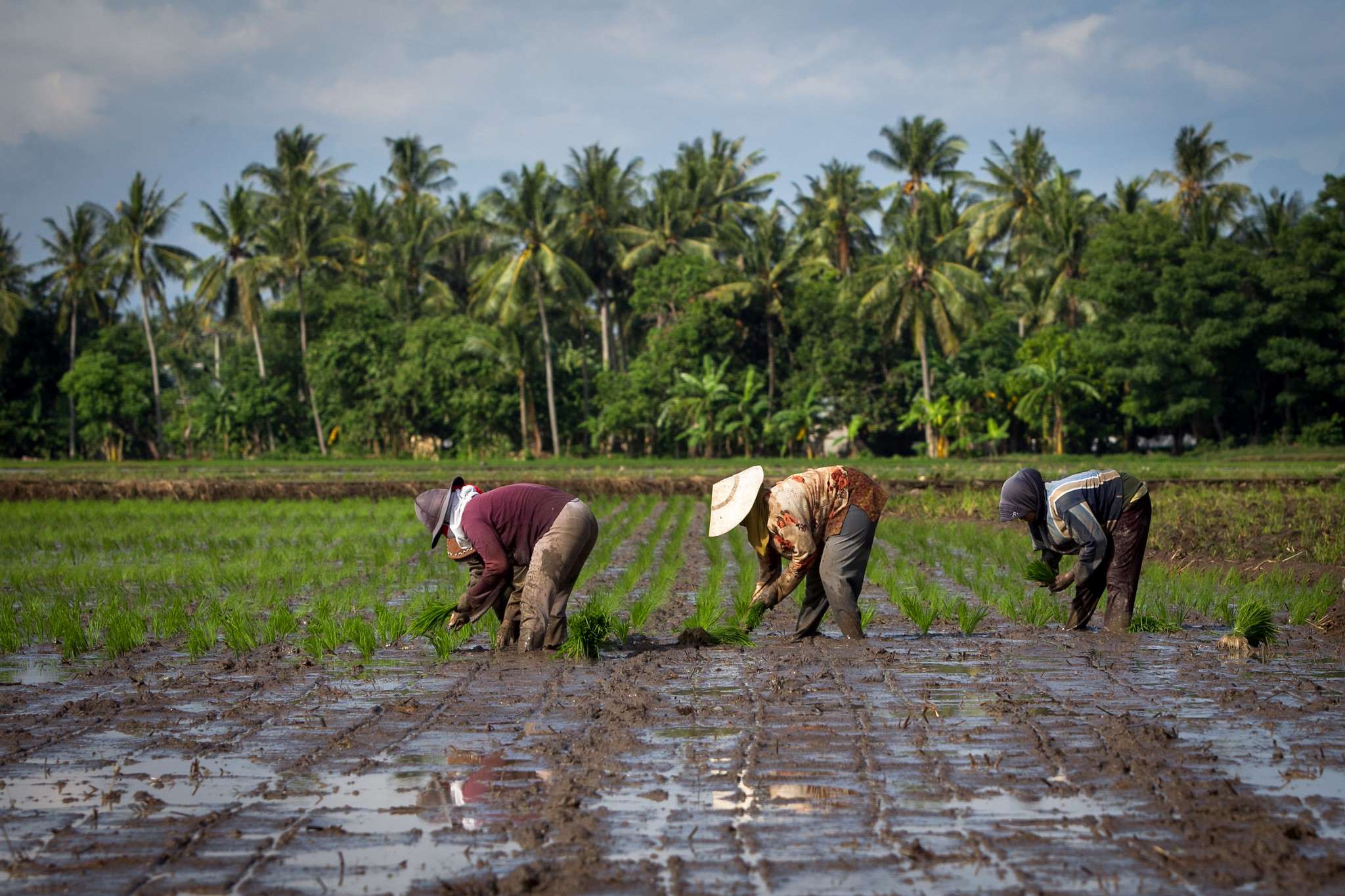

Gardening Trends
What Is The Difference Between Vegetative Planting And Seed Agriculture
Modified: February 2, 2024
Discover the key distinctions between vegetative planting and seed agriculture in the world of gardening trends. Uncover the benefits and drawbacks of each method for a successful gardening experience.
(Many of the links in this article redirect to a specific reviewed product. Your purchase of these products through affiliate links helps to generate commission for Chicagolandgardening.com, at no extra cost. Learn more)
Table of Contents
- Introduction
- Definition of Vegetative Planting
- Definition of Seed Agriculture
- Differences between Vegetative Planting and Seed Agriculture
- Factors influencing the choice between Vegetative Planting and Seed Agriculture
- Advantages and Disadvantages of Vegetative Planting
- Advantages and Disadvantages of Seed Agriculture
- Conclusion
Introduction
Gardening is a hobby loved by many, providing an opportunity to connect with nature and cultivate beautiful plants. However, there are different methods of growing plants, such as vegetative planting and seed agriculture. Understanding the difference between these two approaches is crucial for gardeners to make informed decisions and achieve optimal results.
Vegetative planting refers to the propagation of plants using parts such as stems, leaves, or roots, rather than seeds. This method allows gardeners to clone existing plants, preserving their desirable characteristics. On the other hand, seed agriculture involves growing plants from seeds, allowing for genetic diversity and adaptation to local conditions.
Both vegetative planting and seed agriculture have their own unique advantages and disadvantages. Additionally, the choice between the two methods depends on various factors, including the specific plant species, desired results, and available resources. Understanding these factors and their impact on plant growth is crucial for successful gardening.
In this article, we will delve deeper into the differences between vegetative planting and seed agriculture, explore the factors that influence their choice, and discuss the advantages and disadvantages of each method. By the end, you will have a clear understanding of these gardening techniques and be equipped to make the best decisions for your own garden.
Definition of Vegetative Planting
Vegetative planting is a method of plant propagation that involves using vegetative parts, such as stems, leaves, or roots, to grow new plants. Unlike seed agriculture, which relies on the reproduction of plants through seeds, vegetative planting allows gardeners to create identical clones of existing plants.
There are several techniques commonly used in vegetative planting, including stem cuttings, leaf cuttings, and root cuttings. Stem cuttings involve removing a section of the stem from a parent plant and planting it in appropriate growing conditions. Leaf cuttings, as the name suggests, involve taking a leaf or a portion of a leaf from a plant and cultivating it until roots form. Root cuttings, on the other hand, involve carefully removing a section of the root and planting it to encourage new plant growth.
Vegetative planting has been practiced for centuries and is particularly useful for plants that do not produce viable seeds or have difficult seed germination requirements. It allows gardeners to preserve the desirable traits of a specific plant and replicate them without relying on the genetic variability inherent in seed production. This method is commonly used for propagating perennial plants, such as roses, fruit trees, and certain vegetables like potatoes.
It is important to note that vegetative planting requires careful attention to the health and vitality of the parent plant. The chosen vegetative parts should be taken from a strong and disease-free plant to ensure the successful growth of the new plant. Additionally, the proper techniques and conditions, including moisture, temperature, and sunlight, must be provided to encourage the development of roots and new shoots.
In summary, vegetative planting is a method of plant propagation that involves using vegetative parts like stems, leaves, or roots to grow new plants. It allows gardeners to create exact clones of desirable plants and is particularly useful for species that have challenging or unreliable seed production methods.
Definition of Seed Agriculture
Seed agriculture is a method of plant propagation that involves growing plants from seeds. This widely used technique allows for genetic diversity and adaptation to specific environmental conditions, making it a fundamental practice in agriculture and gardening.
Seeds are the result of sexual reproduction in plants, where pollen from the male part of a flower fertilizes the female part, leading to the formation of a seed. These seeds contain the genetic information necessary for the development of a new plant, including traits inherited from both parent plants.
Seed agriculture typically begins with the selection and collection of mature, viable seeds from plants that have desired characteristics. These seeds are then planted in suitable growing conditions, where they germinate and develop into young seedlings. With proper care and cultivation, these seedlings can grow into mature plants that produce flowers and fruits, enabling the cycle of reproduction to continue.
There are various factors to consider when practicing seed agriculture, including seed quality, environmental conditions, and maintenance practices. Quality seeds should be free from disease, viable, and have a high germination rate. The choice of environmental conditions, such as temperature, moisture, and sunlight, must be optimized to ensure successful seed germination and plant growth. Additionally, proper maintenance practices, including watering, fertilization, and pest control, are essential for the healthy development of seed-grown plants.
Seed agriculture offers several advantages. First, it allows for the preservation of genetic diversity, as seeds contain a combination of traits from both parent plants. This diversity increases the chances of plants adapting to changing environmental conditions, pests, and diseases. Second, seed agriculture allows for mass production, making it suitable for large-scale farming and commercial gardening. Finally, by growing plants from seeds, gardeners have the opportunity to experiment with different varieties, selecting those that perform best in their specific conditions.
In summary, seed agriculture is a method of plant propagation that involves growing plants from seeds. It allows for genetic diversity, enables mass production, and provides opportunities for experimentation and selection of desirable plant varieties.
Differences between Vegetative Planting and Seed Agriculture
Vegetative planting and seed agriculture are two distinct methods of plant propagation, each with its own characteristics and applications. Understanding the differences between these approaches is essential for gardeners to choose the most suitable method for their specific needs and goals. Below are some key differences between vegetative planting and seed agriculture:
- Propagation Materials: The primary difference lies in the materials used for propagation. In vegetative planting, plant parts such as stems, leaves, or roots are utilized to grow new plants, while seed agriculture relies on the use of seeds for propagation. Consequently, vegetative planting allows for the exact replication of desired traits from the parent plant, whereas seed agriculture introduces genetic variability.
- Genetic Diversity: Vegetative planting results in the production of genetically identical plants, known as clones, as they are exact replicas of the parent plant. On the other hand, seed agriculture promotes genetic diversity through sexual reproduction, where characteristics from both parent plants are combined in the seeds. This diversity enhances adaptation to environmental conditions and the potential for new and improved plant varieties.
- Propagation Success Rate: Vegetative planting generally has a higher success rate compared to seed agriculture. This is because rooting cuttings or using other vegetative parts directly from a healthy parent plant provides a head start in terms of growth and establishment. In seed agriculture, the germination success rate can vary depending on factors such as seed quality, environmental conditions, and proper seed treatment.
- Propagation Time: Vegetative planting often results in faster plant growth and maturity compared to seed agriculture. This is because clones derived from vegetative parts inherit the age and maturity level of the parent plant and can bypass the juvenile growth stage. In seed agriculture, the process of seed germination and subsequent growth may take longer, requiring patience and additional care.
- Plant Variability: Vegetative planting maintains the exact characteristics of the parent plant, making it ideal for preserving desirable traits, such as flower color, fruit quality, or disease resistance. In contrast, seed agriculture introduces variability, allowing gardeners to explore and select for new and improved traits in the resulting plant population.
Ultimately, the choice between vegetative planting and seed agriculture depends on various factors, including the plant species, desired outcomes, available resources, and the gardener’s goals. While vegetative planting provides a reliable method for preserving specific traits and rapid propagation, seed agriculture offers genetic diversity and the opportunity for selection and evolution.
Factors influencing the choice between Vegetative Planting and Seed Agriculture
When deciding between vegetative planting and seed agriculture, several factors come into play. These factors can have a significant impact on the success and effectiveness of the chosen propagation method. Below are some key factors that influence the choice between vegetative planting and seed agriculture:
- Plant Species: Different plant species have varying levels of compatibility with vegetative planting and seed agriculture. Some plants, such as roses and fruit trees, are well-suited for vegetative propagation due to their ability to produce reliable clones. Conversely, plants that produce a large number of seeds and have strong germination rates, like annual flowers and vegetables, are more commonly propagated through seed agriculture.
- Desired Characteristics: The desired traits in the new plants also play a role in the choice between methods. If the goal is to preserve specific and desirable traits found in the parent plant, such as flower color or fruit quality, vegetative planting is often the preferred option. Alternatively, if the intention is to introduce genetic diversity and explore new traits, seed agriculture provides the opportunity for variation and selection.
- Propagation Objectives: The specific objectives of the gardener or agricultural practitioner can heavily influence the choice of propagation method. If the goal is to quickly and efficiently propagate a large number of identical plants, vegetative planting is often the most efficient approach. Conversely, if the aim is to experiment with different plant varieties and characteristics, seed agriculture allows for more flexibility and potential for new discoveries.
- Resources and Infrastructure: The availability of resources and infrastructure can also influence the choice between vegetative planting and seed agriculture. Vegetative planting may require specific equipment, such as misting systems or controlled environments, to ensure successful rooting and establishment. Seed agriculture, on the other hand, requires a reliable source of quality seeds and appropriate facilities for seed germination and growth.
- Environmental conditions: Environmental factors, such as climate, temperature, and seasonality, can impact the success of both vegetative planting and seed agriculture. Some plants may have specific requirements for successful vegetative propagation, such as high humidity or specific temperature ranges, which need to be provided for optimal results. Seed agriculture may require careful consideration of the planting season, as well as exposure to suitable environmental conditions for seed germination and growth.
Considering these factors is essential in making an informed decision between vegetative planting and seed agriculture. By evaluating the specific plant species, desired traits, objectives, available resources, and environmental conditions, gardeners and agricultural practitioners can select the most appropriate propagation method for their needs and maximize the chances of success.
Advantages and Disadvantages of Vegetative Planting
Vegetative planting, as a method of plant propagation, offers certain advantages and disadvantages that gardeners should consider before deciding to use this technique. Understanding these pros and cons will help determine if vegetative planting is the most appropriate approach for their gardening needs. Below are some of the advantages and disadvantages of vegetative planting:
-
Advantages:
- Preservation of Desired Traits: Vegetative planting allows for the exact replication of desirable traits found in the parent plant. This is particularly beneficial when striving to maintain specific flower color, fruit quality, or disease resistance.
- Clonal Reproduction: By using vegetative parts, gardeners can create genetically identical clones of existing plants. This ensures consistency in plant characteristics and eliminates the unpredictability associated with seed-produced variations.
- Rapid Plant Growth: Vegetative planting often results in faster plant growth and maturity compared to seed agriculture. Clones inherited from mature parent plants bypass the juvenile growth stage, accelerating the establishment of new plants.
- Propagation Success: Vegetative propagation generally has a higher success rate than seed germination. This is because the selected vegetative parts come from healthy parent plants and have a head start in terms of growth and root development.
-
Disadvantages:
- Lack of Genetic Diversity: Vegetative planting produces genetically identical plants, limiting genetic diversity and adaptability. This can make the plants more susceptible to environmental changes, pests, and diseases.
- Challenges in Seed Production: Some plant species may not produce reliable seeds or have complex seed germination requirements, making vegetative planting the only viable option for their propagation.
- Dependency on Parent Plants: Vegetative planting requires access to healthy and disease-free parent plants to obtain suitable propagative materials. This reliance on existing plants can limit the availability and accessibility of propagation resources.
- Propagation Cost: The cost of vegetative planting can be higher than seed agriculture due to the need for specific equipment, such as misting systems or controlled environments, and the potential requirement for specialized knowledge or techniques.
By considering these advantages and disadvantages, gardeners can make informed decisions about when and how to utilize vegetative planting. It is a valuable technique for preserving desired traits and rapidly propagating certain plant species, but it is important to be aware of the limitations and drawbacks associated with this method.
Advantages and Disadvantages of Seed Agriculture
Seed agriculture, as a method of plant propagation, offers distinct advantages and disadvantages that gardeners should consider before deciding to use this technique. Understanding these pros and cons will help determine if seed agriculture is the most appropriate approach for their gardening needs. Below are some of the advantages and disadvantages of seed agriculture:
-
Advantages:
- Genetic Diversity: Seed agriculture promotes genetic diversity as seeds contain traits inherited from both parent plants. This diversity enhances the plant’s adaptability to environmental changes, pests, and diseases, increasing the chances of survival and success.
- Flexibility and Variety: Seed agriculture allows gardeners to explore and experiment with different plant varieties and characteristics. It offers a wide range of choices and opportunities to select plants with specific traits, such as flower colors, fruit flavors, or growth habits.
- Mass Production: Seed agriculture is well-suited for large-scale farming and commercial gardening due to the ability to produce a large number of plants from a single batch of seeds. This facilitates the cost-effective production of crops and allows for greater availability in the market.
- Natural Evolution and Selection: Seed agriculture enables the natural process of evolution and selection. By allowing plants to sexually reproduce and generate seed variations, it creates opportunities for the emergence of new and improved plant varieties that can adapt to changing conditions.
-
Disadvantages:
- Genetic Variability: While genetic diversity is an advantage, seed agriculture introduces genetic variability, which can result in unpredictable plant characteristics. This can be challenging when consistency in traits is desired, such as in the production of uniform crops or maintaining specific cultivars.
- Seed Quality and Viability: The success of seed agriculture depends on the quality and viability of the seeds used. Poor-quality seeds, low germination rates, or seeds that are not true to type can lead to disappointing outcomes and wasted efforts.
- Longer Establishment Time: Seed agriculture can take longer to establish new plants compared to vegetative planting. Seeds often require specific germination conditions, including temperature, moisture, and light, which can extend the time from sowing to the maturity of the plant.
- Greater Attention to Environmental Conditions: Seed agriculture requires careful consideration of environmental conditions, such as climate, season, and soil quality, to ensure successful seed germination and growth. Failure to provide optimal conditions can negatively impact the success rate of seed propagation.
By considering these advantages and disadvantages, gardeners can make informed decisions about when and how to utilize seed agriculture. It is a versatile and flexible method that offers genetic diversity, variety, and commercial production potential. However, it is important to be aware of the challenges associated with genetic variability, seed quality, and the need for specific environmental conditions.
Conclusion
Choosing between vegetative planting and seed agriculture is an important decision for gardeners, as it determines the method of plant propagation and ultimately affects the success and outcomes of their gardening endeavors. Both approaches have distinct advantages and disadvantages, and understanding these factors is crucial in making informed decisions.
Vegetative planting offers benefits such as the preservation of desired traits, the ability to create genetically identical clones, and rapid plant growth. However, it lacks genetic diversity and can be dependent on the availability of healthy parent plants. On the other hand, seed agriculture promotes genetic diversity, provides flexibility and variety, and allows for natural evolution and selection. But it introduces genetic variability and requires attention to seed quality and environmental conditions.
The choice between vegetative planting and seed agriculture depends on various factors, including the specific plant species, desired characteristics, propagation objectives, available resources, and environmental conditions. It is important for gardeners to evaluate these factors and consider their gardening goals and preferences in order to select the most appropriate method.
Ultimately, both vegetative planting and seed agriculture have their place in gardening and agriculture. The key is to understand the strengths and weaknesses of each method and leverage them accordingly. Experimentation and experience can also help determine which approach works best for specific plant species and individual gardening situations.
By considering the differences, factors, advantages, and disadvantages of vegetative planting and seed agriculture, gardeners can make informed decisions and optimize their plant propagation techniques. Whether it’s cloning plants to preserve specific traits or exploring genetic diversity and adaptation, gardeners can enjoy the rewards of successful plant propagation and achieve beautiful and thriving gardens.
